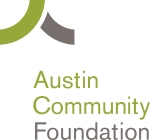
Does this guy look like a slacktivist to you?
Oh, haters. I understand you. I am one, too — critical of anything that looks too cool, to0 simple or too clever.
I’m the one who coined the term “slacktivism” in the first place … well, I mean, I used it on this blog about a year ago, before it was cool. (Is it cool, yet?)
Back then I was worried that these acts of slacktivism were replacements for genuine engagement in social issues, and now I know better: They’re not replacements, they’re a part of something bigger.
Let’s take HelpAttack, for example. It’s a new application that works with your Twitter account. You register with HelpAttack by connecting it with your Twitter account, pledging a penny or 10 cents or a dollar – any amount – per Tweet to any nonprofit organization of your choice. The system estimates how many Tweets you tweet per month and estimates what you might donate to that nonprofit per month, and even lets you set a limit just in case you find yourself in a Tweeting frenzy and wind up pledging your house away.
Simple? Yes. Too simple? Maybe. And your point is…?
“But these people aren’t doing anything! They don’t care about that organization! Why wouldn’t they just donate the money directly to the nonprofit? This makes them feel like they’re doing something — they’re not!”
Here are three reasons I think these actions are worthwhile.
1. Slacktivism is an entry point to philanthropy. For people who have never donated to a cause before, apps like these can be a simple way to start. Philanthropy has offered these types of opportunities for years; think about the Salvation Army’s red bucket or the Jerry Lewis telethon. What’s the point of making it difficult for people to make a donation? Remind me…?
2. Slacktivism is another way for people who already give and care about a cause to give even more. If I’m already a volunteer and I make an annual donation, why not tag on an extra 10 cents per Tweet? It’s simple to do and even kind of fun. Again, remind me why this is bad…?
3. Slacktivist enablers (yes, I just coined that term) bust their asses to bring you these “simple” applications. Have you ever met Alex Winkelman, founder of Charity Bash? She has every opportunity to spend the bulk of her time shopping, but she’s chosen to organize these parties that raise about $5,000 per month for charity. Yes, attendees just have to pay $10 at the door and look hot, but if you’ve ever organized an event with sponsors, entertainment and a beneficiary, you know what a ton of work it can be. Sure Alex is an enabler… an enabler that donates about $75,000 a year to local nonprofits.
And as for HelpAttack… I was actually asked by Dave Neff to serve on the board for HelpAttack, and I have to say I’ve learned more than I’ve given back (as usual). What I’ve learned is how much time, money, sacrifice and long nights it takes to create and launch these applications. Sarah, Dave and Ehren have every right to have ignored their idea for HelpAttack and pursued something sexier — like bringing the world another location-based application. (Yawn.)
But they chose to use their powers for good. In the meantime, they’ve taught themselves how to launch a new business, how to promote cause-oriented applications, how to partner with nonprofits and how to work together as a team. And, by the way, they’ll probably raise thousands of dollars for charity.
Too simple? Hardly. Worthwhile? Totally.
Filed under: Creative fundraising, Learning opportunities, State of Austin Philanthropy, The business of nonprofits, What it's like to lead, What it's like to volunteer | Tagged: Alex Winkelman, app, application, Austin, austin charity, charity, Charity Bash, Dave Neff, fundraising, HelpAttack, nonprofits, slacker, slacktivism, Twitter, Young Professionals | 1 Comment »
 The diversity of backgrounds, perspectives and ideas blows me away. But what all our New Philanthropists have in common is a commitment to Austin. They tend to work outside the traditional nonprofit structure, creating their own points of engagement or standing out among their peers for their dedication to their cause.
The diversity of backgrounds, perspectives and ideas blows me away. But what all our New Philanthropists have in common is a commitment to Austin. They tend to work outside the traditional nonprofit structure, creating their own points of engagement or standing out among their peers for their dedication to their cause.











